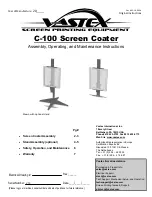
9
which is undesirable for a large audience.
Preferably, use a screen with black, non-reflecting borders,
which will perfectly frame the projected image.
Avoid light shining directly on the screen during projection as
this will reduce contrast and black level detail on the projected
image. For the true cinema experience best results are
achieved with little or no ambient light.
Furniture and other objects with reflecting surfaces, as well as
light coloured walls should be avoided, as they are likely to
interfere with the screen’s characteristics.
5 SWITCHING ON AND OFF THE PROJECTOR
CAUTION: Connect the projector to a power supply
with a nominal voltage within the following values:
100-240 Vac, 50/60 Hz. It must be earthed
(Fig. 13)
.
Position I : on
Position O : off
Power switch
Fused power
socket
Power plug
Fig. 13
Upon switch on (in position
I
) the projector will initialise (red
and green LEDs on). Followed by stand-by mode (red LED on)
(Fig. 14).
DIGIT
AL
INPUT
AUDIO
OUT
OOM
CONTROL (RS 232)
GRAPHICS RGB
R/Cr
G/Y
B/Cb
HV
2
4
3
5
ATTENTION:
pour ne pas compromettre
la protection contre les resque d'incende
remplacer par un fusib
le de meme type
et de mems car
acter
istique
CAUTION:
for contin
ued protection against
risk of fire
, replace
only with same type
and r
ating fuse
.
Fig. 14
SWITCH ON FROM STAND-BY
By remote control: press one of
1...9
By keyboard: press
Up
or
Down Arrow .
ZOOM
CONTROL (
R
GRAP
H
1
2
4
F1
E
Fig. 15
When switching on from stand-by, the projector will turn on the
lamp; after a brief warm up period the image will be displayed
(green LED on).The input automatically selected will be the
last one memorised prior to switch off
(Fig. 15)
.
You may experience difficulties switching on the projector shortly
after switching off: the lamp may fail to come on as it is too hot.
Just wait a few minutes to cool it down.













































